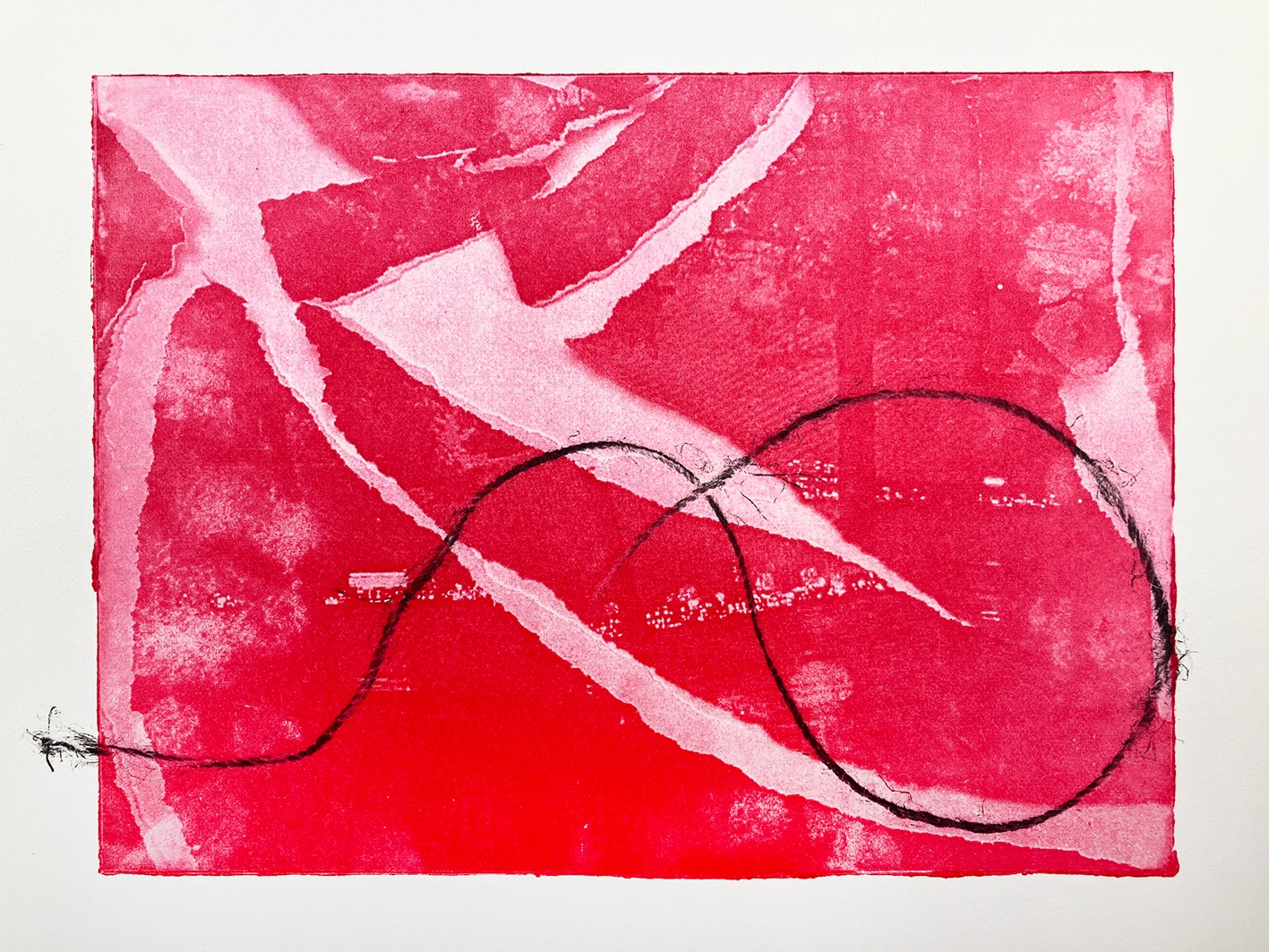The exhibition On The Edge of A Disappearing Landscape brings together fleeting quotidian observations of urban and personal spaces. The layers of different places intertwine: they disappear, fade and re-emerge. These figments of imagination have been captured in graphic prints over several years. The process has often been set in motion by the changes that occur in the environment due to differing light conditions. The places are chosen from my daily trajectories, so it happens that a building located at Tartu mnt 24 in Tallinn is set side by side to Palganeem in Lääne-Virumaa. In the exhibition, I invite the viewer to take a closer look at the rapidly disappearing habitats around us, and its dislocation both in urban space and in landscapes.
In the pursuit of making this inherent impermanence visible, I have used a method known as ghost printing – after repeatedly printing from the same plate, the pigment fades. It is important for me not to focus on techniques, but to explore different ideas through graphics. The dimension of time in the process of intaglio printing, working with material and meaning-creation are all compelling. Creating On The Edge of A Disappearing Landscape has been an exploratory process in which I have used different colors and layers to create new graphic works.
Lilli-Krõõt Repnau
Lilli-Krõõt Repnau has graduated from the Graphics department of the Estonian Academy of Arts in 2005 and the Animation department in 2015, where she currently works as a department head. From 2020, she continued her master’s studies in art pedagogy. In addition, she has studied in the Video department of the Lucerne School of Art and Design in Switzerland. In 2010, Lilli-Krõõt Repnau was awarded with the Edmund Valtman scholarship for her graphic works and in 2018 with the Tallinn Print Triennial prize. She is a member of the Estonian Artists’ Union, the Association of Estonian Printmakers and graafika.ee studio.
The exhibition is supported by the Cultural Endowment of Estonia.
Exhibitions in Draakon gallery are supported by the Cultural Endowment of Estonia, Estonian Ministry of Culture and Liviko AS.




